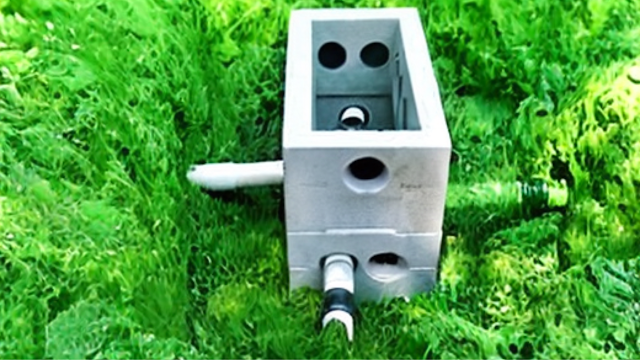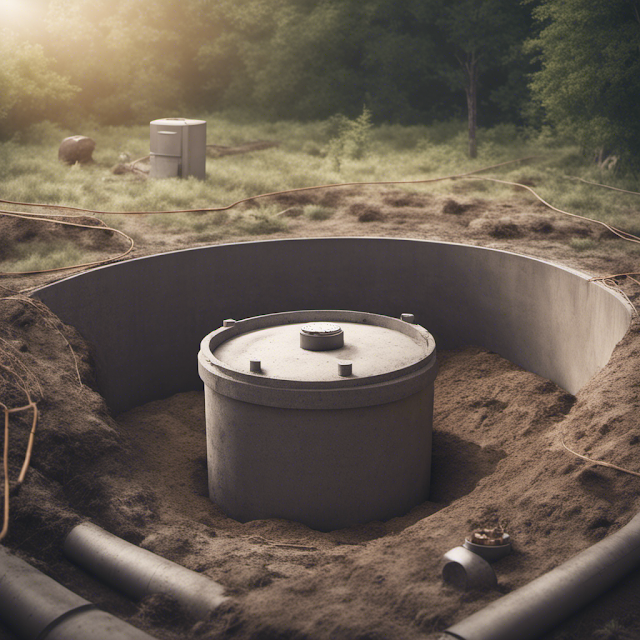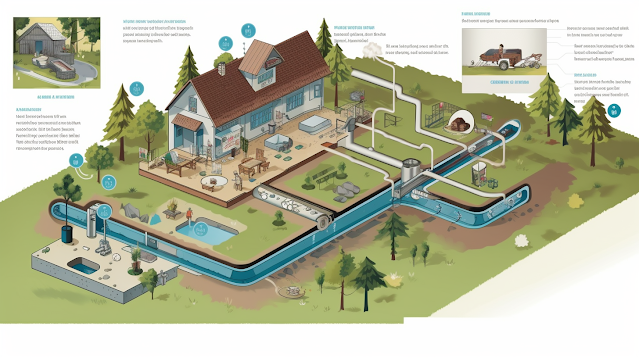Understanding the Functionality of Septic Fields: How Do They Work?
 |
| Septic Fields: How Do They Work? |
Imagine this: you're in your home, flushing the toilet or running the dishwasher, and the wastewater vanishes down the drain. But have you ever wondered where it goes from there? That's where septic fields come into play.
These underground systems, which are essential for homeowners who
rely on septic systems, receive and filter the effluent from septic tanks. By
understanding how septic fields work, you can ensure that your septic system
functions properly and protects both the environment and your community.
Let's dive in and explore the fascinating world of septic fields
together.
Key Takeaways
•
Septic fields play a crucial
role in effectively managing waste by receiving and filtering effluent from septic tanks.
•
The components of a septic
field, including perforated pipes, a distribution box, and soil, work together
to facilitate the final stage of wastewater treatment.
•
Proper drainage is essential
for the efficient functionality of septic fields, as it prevents overloading
and facilitates the filtration process.
•
Regular inspection,
maintenance, and troubleshooting are necessary to ensure the long-term
efficiency and optimal functionality of septic fields.
Understanding
the Role of Septic Fields in Waste Management
You
may be wondering how septic fields play a crucial role in managing waste
effectively. Septic fields, also known as drain fields or leach fields, are an
integral part of a septic system. Their main function is to receive the
effluent from the septic tank and facilitate the final stage of wastewater
treatment.
The
septic field consists of a network of perforated pipes buried in trenches or
beds within the soil. These pipes distribute the effluent evenly, allowing it
to seep into the surrounding soil. As the effluent percolates through the soil,
it undergoes natural filtration and treatment, removing harmful bacteria,
viruses, and other contaminants.
This
process helps to purify the wastewater before it eventually reenters the
groundwater system. In summary, septic fields are essential for the proper
disposal and treatment of wastewater, ensuring a safe and sustainable waste
management system.
The Components
of a Septic Field: An Overview
To
get a better grasp of septic field operation, it's essential to have an
overview of its different components.
A
septic field, also known as a drain field or leach field, is an important part
of a septic system. It's responsible for the final treatment and disposal of
the wastewater that comes from the septic tank.
The
main components of a septic field include perforated pipes, distribution box,
and the soil.
The
perforated pipes are buried in trenches and distribute the effluent from the
septic tank evenly throughout the field.
The
distribution box serves as a junction point for the pipes.
Finally,
the soil acts as a natural filter, removing harmful bacteria and other
contaminants from the effluent before it returns to the groundwater.
Understanding
these components is crucial for maintaining the proper functioning of a septic
field.
The Process of
Effluent Disposal in Septic Fields
Effluent
from the septic tank is evenly distributed throughout the septic field by the
perforated pipes. These pipes, strategically placed in the drain field, allow
the septic tank effluent to flow out and disperse into the surrounding soil.
This
process is crucial for the proper functioning of the septic system. As the
effluent seeps into the soil, it undergoes a natural filtration process. The
soil acts as a natural filter, removing some of the impurities and pathogens
present in the effluent.
This
filtration process helps to purify the effluent further before it reaches the
groundwater. It's important to ensure that the septic field is properly
designed and maintained to prevent any blockages or overflow issues that could
lead to contamination.
Regular
inspection and maintenance of the septic system are key to its long-term
efficiency and functionality.
The Importance
of Proper Drainage in Septic Field Functionality
Proper
drainage in your septic field is crucial for its efficient operation and
preventing potential issues. To understand the importance of drainage in septic
field functionality, consider the following points:
•
Adequate drainage ensures that
effluent is properly distributed throughout the field, preventing overloading
of specific areas.
•
Proper drainage facilitates the
filtration process, allowing the soil to effectively remove contaminants and
pathogens from the effluent.
•
Insufficient drainage can lead
to the formation of standing water in the field, which can hinder the
filtration process and cause odor and potential health hazards.
•
Regular maintenance, including
regular inspection and cleaning of drainage pipes, is essential to ensure
optimal drainage and prevent blockages that can disrupt the functionality of
the septic field.
Maintenance and
Troubleshooting Tips for Septic Fields
By
regularly inspecting and maintaining your septic field, you can prevent
potential issues and ensure its efficient functionality. To keep your Septic Tank functioning as it should do.
Maintenance
is key to the longevity of your septic field. Regularly pumping the septic tank
is important to prevent solids from clogging the drain lines and infiltrating
the soil. It's recommended to have the tank pumped every 3-5 years, depending
on the size of your household.
Additionally,
it's crucial to avoid flushing non-biodegradable items, such as wipes and
sanitary products, down the toilet as they can cause blockages. Monitoring the
water usage and avoiding excessive water flow can also help prevent overloading
the septic system.
If
you notice any odors, slow draining sinks, or gurgling sounds, it's important
to troubleshoot the issue promptly to prevent further damage.
Frequently Asked Questions
How Deep Should
the Perforated Pipes Be Buried in a Septic Field?
The perforated pipes in a septic field should be buried at a depth
of 12-18 inches. This ensures proper distribution of effluent and allows for
filtration through the surrounding soil, maintaining the functionality of the
septic system.
Can I Plant
Trees or Shrubs on Top of My Septic Field?
Yes, you can plant trees or shrubs on top of your septic field, but
it's important to choose plants with shallow root systems that won't interfere
with the functionality of the septic system.
Is It Possible
to Install a Septic Field in Rocky or Uneven Terrain?
Yes, it is possible to install a septic field in rocky or uneven
terrain. The field can be designed with alternative methods such as using
specialized equipment to excavate or installing raised drain fields.
Are There Any
Alternative Systems to Septic Fields for Waste Management?
There are alternative systems to septic fields for waste management.
One option is a sewage treatment plant, which uses chemical and biological
processes to treat wastewater before releasing it into the environment.
What Are the
Potential Environmental Impacts of a Malfunctioning Septic Field?
A malfunctioning septic field can cause potential environmental
impacts. It may lead to groundwater contamination, soil erosion, and the
release of harmful pathogens. Regular maintenance and proper functioning are
crucial to prevent these issues.
Conclusion
So now you know how septic
fields work, ensuring that your waste is properly filtered and disposed of.
It's a fascinating process, isn't it? Well ok its essential for your septic tank and it is fascinating for some of us
Just think, as you go about
your daily activities, your septic field is quietly doing its job, protecting
the environment and preventing groundwater contamination.
It's almost like having a
superhero right under your feet.
So next time you flush the
toilet, take a moment to appreciate the unsung hero of waste management – your
septic field.



.png)






Comments
Post a Comment